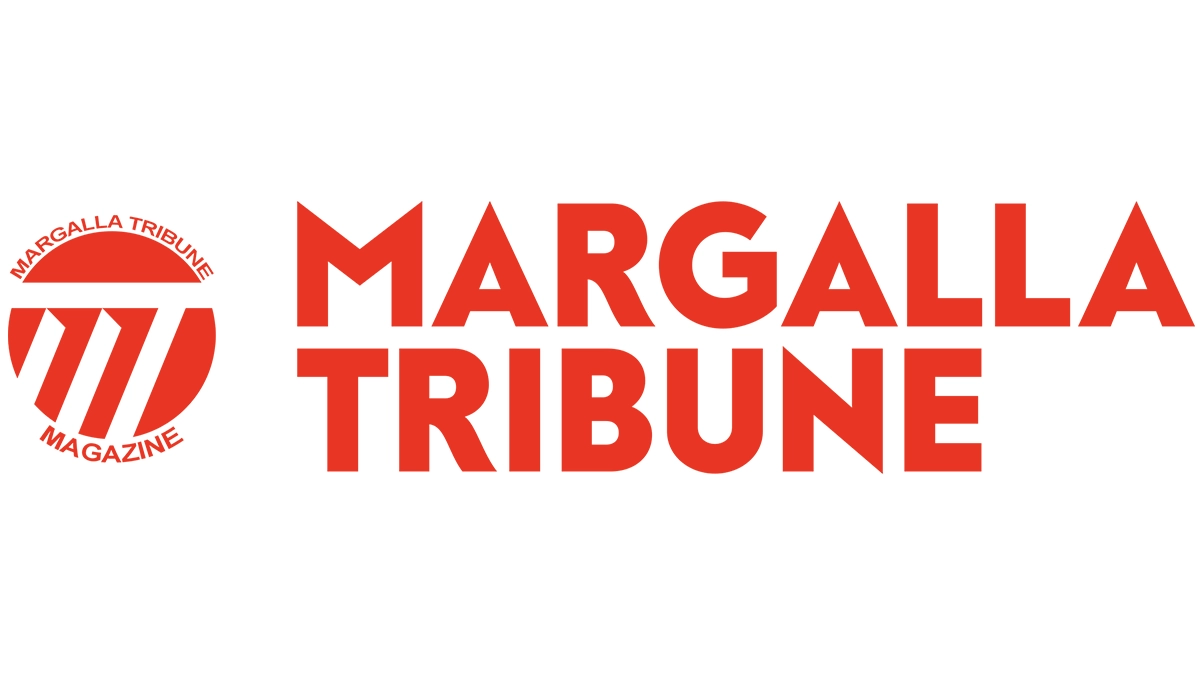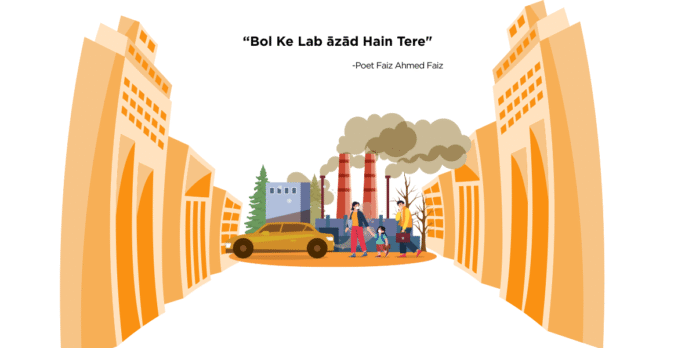Transforming our cities requires a fundamental shift in priorities, a radical departure from the failed models of the past. It demands more than just new infrastructure projects; it requires a new urban philosophy, embedded in policy and practice.
First, we must declare peace in the war on pedestrians and cyclists. We must actively reclaim our streets for people. This isn’t an anti-car screed; it’s a pro-human agenda. Envision networks of wide, shaded, continuous sidewalks, universally accessible, free from obstructions. Picture intersections redesigned with raised crosswalks, refuge islands, and traffic signals timed to give pedestrians priority and ample crossing time. Imagine reclaiming stretches of commercial areas, the entirety of Jinnah Super Market, Sadar Bazar in Rawalpindi, as vibrant, car-free pedestrian areas, perhaps initially on weekends, allowing life to spill back into the spaces stolen by traffic. This necessitates implementing and strictly enforcing significantly lower speed limits in all residential and commercial zones, utilizing technology like automated cameras for consistent enforcement, and imposing penalties with real consequences, perhaps linked to vehicle value or escalating sharply for repeat offenders, for speeding, dangerous overtaking, and tailgating. Critically, it demands building a comprehensive, interconnected network of physically protected bicycle lanes along all major urban routes, buffered from speeding traffic by parked cars, planters, or raised curbs. Only then will cycling become a genuinely safe, practical, and appealing choice for daily transportation for people of all ages and abilities, not just a perilous pursuit for the daring few.
Second, we must build a robust, reliable, and dignified public transport backbone. The current Metrobus systems, while valuable, are mere fragments. We need massive, sustained investment to expand these networks into a truly comprehensive system, more BRT corridors reach- ing all major population centers, exploring the feasibility of light rail or modern tram systems along high-demand routes, and, crucially, developing extensive networks of reliable, safe, clean, and frequent feeder buses that seamlessly connect neighbour hoods to the main trunk lines.
Ticketing must be integrated across modes (bus, metro, potentially even ride hailing), schedules must be adhered to religiously, and real-time arrival information must be easily accessible via smartphone apps and digital displays at stops. Dedicated bus lanes must be enforced with zero tolerance to ensure speed and reliability. And yes, perhaps it is time to seriously consider mandating that senior government officials, particularly those within planning departments and transport ministries, utilise public transport for a portion of their weekly commutes. Only through direct, regular experience can they fully grasp the system’s deficiencies and develop the empathy needed to champion genuine improvements that serve the entire populace.
Third, our cities must grow smarter, not just wider, and become protectors, not destroyers, of our vital natural resources. This requires a fundamental overhaul of land-use planning and zoning regulations. We must dismantle the tyranny of outdated single-use zoning that mandates low-density sprawl. Policies must actively allow and incentivise well-designed, mixed-use, mid-rise development (G+5 to G+10 stories, for example) within the existing urban footprint, especially concentrated around public transport nodes. Innovative policies like taxing vacant or underutilised plots within sprawling housing societies should be implemented to discourage land speculation and promote the efficient utilisation of serviced land. Most importantly, we must establish firm, legally enforceable urban growth boundaries to halt the disastrous encroachment onto prime agricultural land surrounding our cities. This will undoubtedly require confronting powerful land development interests and institutional inertia, but the long-term food security, environmental health, and economic stability of the nation hang in the balance. Concurrently, the management of essential resources like water must become sustainable, involving universal metering and usage-based charging systems to instil a culture of conservation and ensure equitable distribution.
We must establish firm, legally enforceable urban growth boundaries to halt the disastrous encroachment.
Fourth, none of these transformative changes is achievable without reformed governance structures and genuine citizen engagement. Pakistan desperately needs empowered, accountable, and financially autonomous local city governments capable of planning and managing municipal services effectively and responsively. The current maze of overlapping federal, provincial, and municipal authorities must be streamlined, with clear devolution of power to the local level. Planning processes must become radically transparent; environmental impact assessments, traffic studies, and project justifications for major infrastructure works must be made public before decisions are finalised, not presented as fait accompli. And citizens must be given a real voice in shaping their urban environment. Mechanisms like participatory budgeting, neighbourhood planning councils, and robust support for independent advocacy groups like Critical Mass Islamabad are essential for building public consensus, fostering local ownership, and holding authorities accountable for delivering cities that serve people.
The Choice Before Us: Gridlock or Garden City?
The path from Islamabad and Rawalpindi is currently hurtling down leads directly towards the congested, polluted, inequitable, and unsustainable reality that already defines much of Lahore. It leads to cities that fail their inhabitants, undermine public health, exacerbate social divisions, and recklessly jeopardise our nation’s fundamental ability to feed itself. But this dystopian future is not predetermined. It is the outcome of choices, choices about how we plan, how we invest, how we govern, and how we live. And these choices can be changed.

The alternative requires courage, vision, and a collective willingness to challenge the deeply entrenched status quo. It involves critically examining the seductive allure of perpetual road expansion and recognising its futility. It demands that we learn from the successes of cities across the globe: from Barcelona’s reclaimed streets to Bogota’s equitable transit, from Singapore’s managed density to Copenhagen’s cycling utopia, and creatively adapt those lessons to our unique cultural and physical context. It insists that we prioritise the long-term well-being and resilience of the many over the short-term convenience and profit of a privileged few.
We stand at a critical crossroads. Islamabad and Rawalpindi were born from ambitious planning visions; it is time to reclaim that spirit, not with outdated blueprints, but with contemporary principles of sustainable urbanism. This era of rapid urbanisation must be treated as an opportunity to build better, smarter, fairer cities, not as an inevitable descent into chaos.
We can preserve the precious green belts that remain; we can demand efficient, dignified public transport; we can assert the fundamental rights of the pedestrian and the cyclist. As Muzammil Hussain of the National Agricultural Research Centre warns, regarding the loss of farmland, “the need for immediate and decisive action is clear.” By acting now, enacting and enforcing strict zoning laws that protect agricultural land, incentivising vertical dev- development on existing urban land, investing heavily in non-motorised and public transport, we can still avert the worst outcomes. It requires a paradigm shift: from prioritizing motorways to nurturing neighbourhood pathways, from celebrating gated villas to embracing vibrant, vertical communities, from relying on imported lifestyles to valuing our own harvests and resources.
If we dare to make this shift, the path forward could lead to a radically different, infinitely brighter future. In my mind’s eye, I picture a different dawn breaking over the twin cities: the first sun illuminating streets where a morning walk is a pleasure, not a peril. Where children can cycle safely to school. Where the air is clean enough to breathe deeply. Where the nearby fields still resonate with the rhythms of agriculture, and the price of roti at the local tandoor remains stable because the wheat is grown locally, not shipped from across the world. Cities like Barcelona and Bogotá show us this isn’t a utopian fantasy; it’s the achievable outcome of deliberate, people-centred planning.

We have seen Lahore’s trajectory, a warning writ large in smog and sprawl. We have no river valley untouched by development pressure, no corridor immune to traffic strangulation, no village safe from the lure of becoming another suburb. Yet, we are not condemned to repeat these mistakes. We can build our cities not as mere engines of commerce or showcases of elite lifestyles, but as proud stewards of our land, our environment, and our shared humanity.
In the end, urbanism is a profound choice, reflecting our values as a society. Do we build cities that respect the dignity of every individual, or cities that bow only to the power of the engine? Pakistan must choose walking, cycling, and efficient mass transit over the false promises of endless highways. We need dense, vibrant, mixed-use communities instead of desolate, car-dependent sprawl. We must remember, viscerally, that the very fields being er- ased today fed someone’s family yesterday and are essential to feeding all our children tomorrow. Let’s craft cities truly worth living in.
The writer can be contacted at yasirkk@gmail.com






